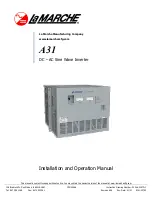
There are 2 types of inverters available for use in consumer applications. These are:
Pure Sine Wave Inverters:
The name "pure sine wave" inverter comes from the wave form of its output, as
shown in the above diagram. This is identical to or replicates as closely as possible
the normal AC mains. As most electronic products are designed to be powered by
sine wave AC, pure sine wave inverters are suitable for all applications, especially
motorized devices where it is proven that pure sine wave power will lengthen the
product's lifetime and run much quieter. Pure sine wave inverters are more
expensive than modified sine wave inverters because they involve a much more
complicated design in order to simulate the smooth sine wave output of standard
mains power.
Modified Sine Wave Inverters:
Again, modified sine wave are named after their output waveform. The output of
the modified sine wave inverter cycles through positive, ground and negative
voltage as shown in the diagram above, to give a rough approximation of a sine
wave.
Modified sine wave inverters are a cheaper alternative to pure sine wave inverters as
they don't require the complicated system needed to smooth and render the output
waveform. The main down side with a modified sine wave is that it can introduce
electrical noise (buzzing) to inductive and A-V equipment. This is caused by the fast
reversal of the output voltage 100 times per second. However, modified sine wave
inverters are OK for heat element devices (kettle, heaters, etc) and devices that have
an external or built-in adaptor (laptop, TV, etc).
How do I choose between Modified Sine Wave or Pure Sine Wave Inverters?
1. Inductive loads such as microwave ovens run faster, quieter, cooler and more
efficiently on pure sine wave.
2. Pure sine wave reduces audible and electrical noise (buzzing) in fans, fluorescent
lights, audio amplifiers, TVs etc
3. Pure sine wave prevents crashes in computers, glitches and noise in monitors
4. Pure sine wave reliably powers the following devices that normally won't work
with modified sine wave inverters:
• Laser printers, photocopiers, magneto-optical hard drives.
• Some fluorescent lights with old-type ballasts.
• Power tools using variable speed controllers AC motors.
• Sewing machines with speed/microprocessor control.
• Battery chargers
Summary of Contents for MI5736
Page 1: ...MI5 6 User Manual 12VDC to 240VAC ...
Page 7: ......

























